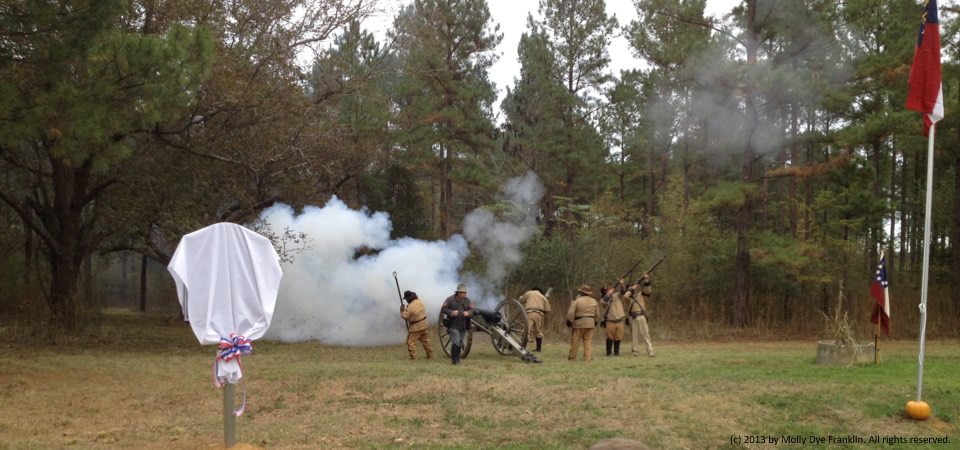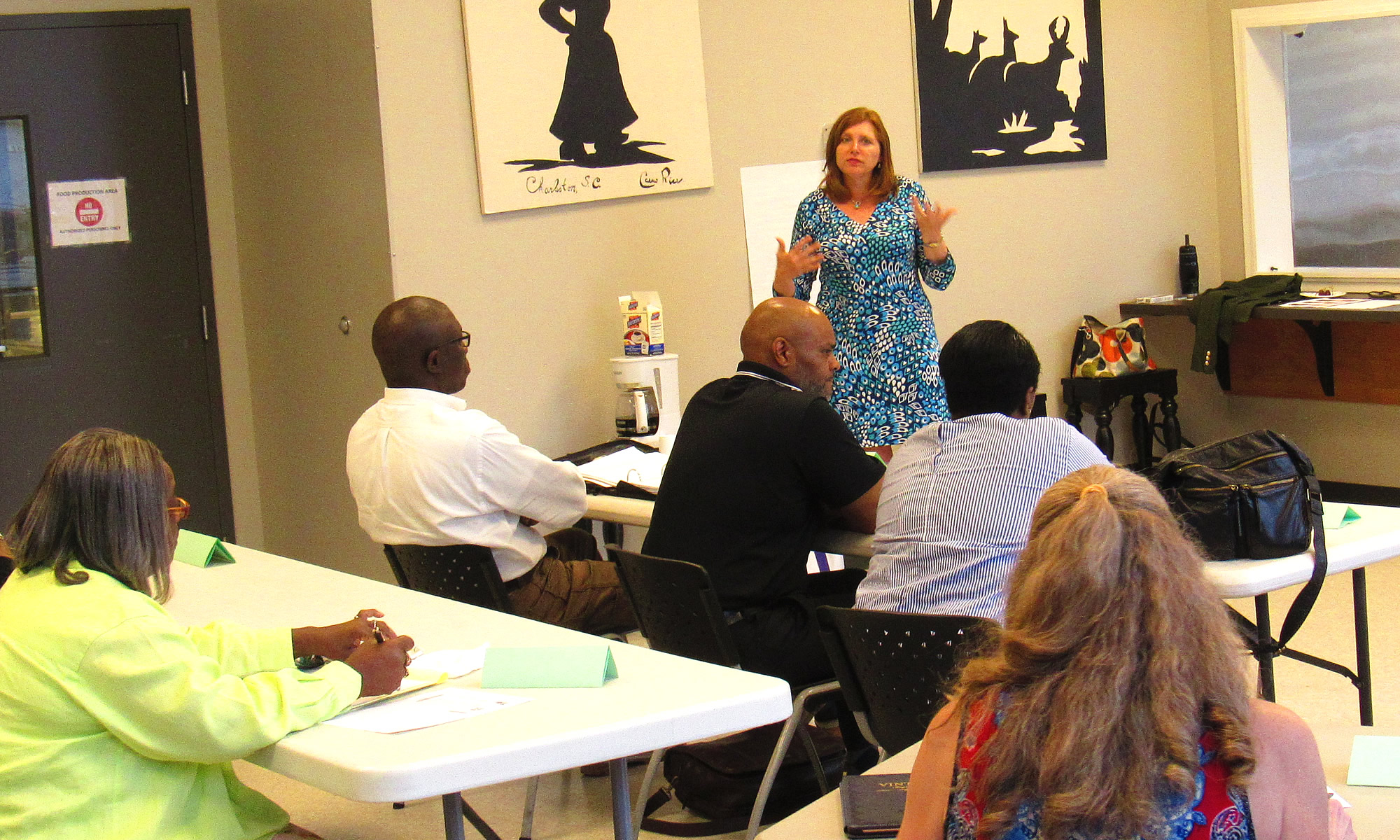
Rural areas in Georgia may start experiencing an uptick in tourism thanks to a state-sponsored program to highlight what was once topic-non-grata — Union Gen. William T. Sherman’s slashing March to the Sea.
The Georgia Department of Transportation is providing almost $700,000 to the nonprofit Georgia Civil War Heritage Trails Inc., to erect interpretive historic markers along routes used by Union and Confederate armies almost 150 years ago around Atlanta and along the Sea campaign.
In the photo above, re-enactors appeared at the unveiling of a new marker at Ivanhoe, the Dye family farm in Burke County. According to Molly Dye Franklin, who provided the picture, the farm was home to a Nov. 26, 1864, skirmish between Union and Confederate troops — one of more than 100 skirmishes across the Peach State. She said the effort could help rural counties like Burke County, which needs tourism and help to rise above endemic poverty.
Burke County, which had about 23,125 people in 2012, is evenly split in the numbers of white and black residents (49 percent each). Its population peak was in 1920 when it had almost 31,000 people; its low point was in 1970 when it had 18,255 people.
The county, located between Augusta and Statesboro, has a median household income of $32,188. Some 28.6 percent of people live in poverty, according to a five-year Census estimate.
Photo taken in November 2014 by Molly Dye Franklin. All rights reserved.

